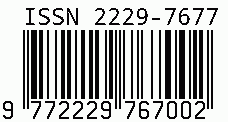
International Journal on Science and Technology
E-ISSN: 2229-7677
•
Impact Factor: 9.88
A Widely Indexed Open Access Peer Reviewed Multidisciplinary Bi-monthly Scholarly International Journal
Plagiarism is checked by the leading plagiarism checker
Call for Paper
Volume 16 Issue 4
October-December 2025
Indexing Partners



















Explainable AI (XAI) Techniques in Mobile Environments
| Author(s) | Dheeraj Vaddepally |
|---|---|
| Country | United States |
| Abstract | Explainable AI (XAI) has become an essential area within artificial intelligence, focusing on the necessity for clarity and comprehensibility in complex machine learning approaches. As artificial intelligence (AI) platforms continue to expand into major industries like medical banking, comprehending their decision-making procedures is vital for fostering credibility and maintaining ethical utilization. This Study mainly focuses on significant XAI methods: LIME (Local Interpretable Model-agnostic Explanations) and SHAP (SHapley Additive exPlanations), focusing on their procedures, benefits and software. This study analyses the challenges encountered by such approaches in mobile instances. We recommend methods to balance trade-offs between disclosure and effectiveness, including lightweight approximating methods, model trimming, and selecting on-device versus cloud-based preparation. The instances related to medical diagnostics and identifying fraud to demonstrate the real-world use of LIME and SHAP, highlighting their effectiveness in delivering interpretable insights. The future of XAI encompasses advancements in both hardware and software, the inclusion of ethical frameworks, and the potential of hybrid models to improve interpretability while handling current limitations. The findings highlight the necessity of choosing suitable XAI techniques tailored to particular contexts to enhance user trust and engagement in AI applications. |
| Keywords | XAI, LIME, SHAP, mobile environment, Artificial intelligence, Machine learning |
| Published In | Volume 16, Issue 3, July-September 2025 |
| Published On | 2025-07-26 |
| DOI | https://doi.org/10.71097/IJSAT.v16.i3.6779 |
| Short DOI | https://doi.org/g9vdc9 |
Share this


CrossRef DOI is assigned to each research paper published in our journal.
IJSAT DOI prefix is
10.71097/IJSAT
Downloads
All research papers published on this website are licensed under Creative Commons Attribution-ShareAlike 4.0 International License, and all rights belong to their respective authors/researchers.

